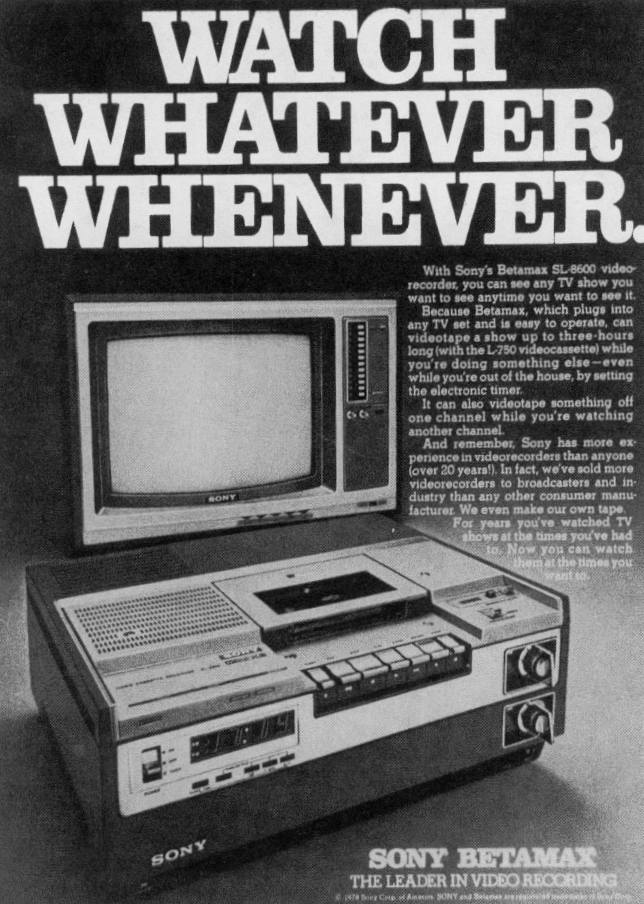Time-shifting, largely an excellent thing, all began with the simple VHS vs. Betamax format war. From an Ars Technica article about the most disruptive recent technologies:
“Time-shifting (or why Jack Valenti is spinning in his grave)
Time-shifting content has been with us for a long time, driving the media industry nuts ever since the invention of the video cassette recorder. In 1982, Jack Valenti—then president of the Motion Picture Association of America—testified before Congress, saying, ‘The VCR is to the American film producer and the American public as the Boston strangler is to the woman home alone.’ (See the Ars series on TV for more Valenti rage.)
But Betamax and VHS were just the beginning. It was a shaky beginning at that, as I can tell you firsthand from years of prying my kids’ mangled copy of half a season’s worth of Power Rangers episodes out of the maw of a VCR tape slot. When hard drives were eventually married to video recording, it did a lot more than just change the recording mechanism. Digital recording moved time-shifting of TV and other content off tapes, virtualizing and outsourcing the recording process to the point that broadcast times are almost irrelevant.
So in some ways, Jack Valenti was right about time-shifting, or at least prescient. The virtualization of broadcast content—its separation from the tyranny of network time slots and from recording media itself—has changed the acts of viewing and listening. It’s accelerated the disintegration of network television and hastened the creation of new media outlets made purely for the Internet. If it weren’t for the move from analog VCR to bits on a disk, things like Netflix’s on-demand service and its all-at-once release of the original series House of Cards would never have happened.”
••••••••••
Time-shifting in 1977:

